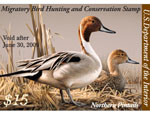Great River National Wildlife Refuge manages river and floodplain habitats along the Upper Mississippi River to promote healthy populations of native fish and wildlife species. We protect and enhance habitat where it still exists and restore it in appropriate places where it is lacking. Our methods include wetland and aquatic habitat management, forest management, grassland management, prescribed fire, cropland management, and private landowner assistance.

Justin Nutter (Volunteer) releases a wood duck after banding
The Mississippi River is a multiple use river: a waterway for shipping grain and other commodities; a popular recreation area for hunting, fishing and boating; and an important habitat corridor for hundreds of species of wildlife and fish. Management of the river is geared toward balancing these purposes and requires partnerships between many different agencies and groups. Port Louisa staff coordinates closely with the Corps of Engineers, the states of Illinois and Missouri, other agencies, private landowners, and non-governmental organizations on many habitat management and restoration projects.


